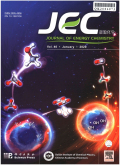- 钛学术文献服务平台 \
- 学术期刊 \
- 工业技术期刊 \
- 石油与天然气工业期刊 \
- 能源化学期刊 \
Ultra-small platinum nanoparticles segregated by nickle sites for efficient ORR and HER processes
Ultra-small platinum nanoparticles segregated by nickle sites for efficient ORR and HER processes
基本信息来源于合作网站,原文需代理用户跳转至来源网站获取
摘要:
In the electrochemical process,Pt nanoparticles (NPs) in Pt-based catalysts usually agglomerate due to Oswald ripening or lack of restraint,ultimately resulting in reduction of the active sites and catalytic effi-ciency.How to uniformly disperse and firmly fix Pt NPs on carbon matrix with suitable particle size for catalysis is still a big challenge.Herein,to prevent the agglomeration and shedding of Pt NPs,Ni species is introduced and are evenly dispersed in the surface of carbon matrix in the form of Ni-N-C active sites (Ni ZIF-NC).The Ni sites can be used to anchor Pt NPs,and then effectively limit the further growth and agglomeration of Pt NPs during the reaction process.Compared with commercial Pt/C catalyst,Pt@Ni ZIF-NC,with ultralow Pt loading (7 wt%) and ideal particle size (2.3 nm),not only increases the active center,but also promotes the catalysis kinetics,greatly improving the ORR and HER catalytic activity.Under acidic conditions,its half-wave potential (0.902 V) is superior to commercial Pt/C (0.861 V),and the mass activity (0.38 A per mg Pt) at 0.9 V is 4.7 times that of Pt/C (0.08 A per mg Pt).Besides,it also shows outstanding HER performance.At 20 and 30 mV,its mass activity is even 2 and 6 times that of Pt/C,respectively.Whether it is under ORR or HER conditions,it still shows excellent durability.These undoubtedly indicate the realization of dual-functional catalysts with low-Pt and high-efficiency properties.

推荐文章
The effect of pH on the sorption of gold nanoparticles on illite
Gold nanoparticles
Illite
Sorption
Charge
Electrostatic interaction
Zinc isotope fractionation under vaporization processes and in aqueous solutions
Evaporation process
Zinc isotope
Kinetic isotope fractionation
Equilibrium fractionation
Zinc species in solution
探讨LTE small cell回传切换策略
LTE-small cell
CSG
回传切换
延迟
Hydrogeochemical processes and multivariate analysis for groundwater quality in the arid Maadher reg
Groundwater quality
Hydrogeochemical processes
Multivariate analysis
Salinity
Mio-Plio
Quaternary aquifer
内容分析
关键词云
关键词热度
相关文献总数
(/次)
(/年)
引文网络
引文网络
二级参考文献 (0)
共引文献 (0)
参考文献 (0)
节点文献
引证文献 (0)
同被引文献 (0)
二级引证文献 (0)
2022(0)
- 参考文献(0)
- 二级参考文献(0)
- 引证文献(0)
- 二级引证文献(0)
引文网络交叉学科
相关学者/机构
期刊影响力
能源化学
主办单位:
中国科学院大连化学物理研究所
中国科学院成都有机化学研究所
出版周期:
双月刊
ISSN:
2095-4956
CN:
10-1287/O6
开本:
出版地:
大连市中山路457号
邮发代号:
创刊时间:
语种:
eng
出版文献量(篇)
2804
总下载数(次)
0
总被引数(次)
7996
期刊文献
相关文献
推荐文献
- 期刊分类
- 期刊(年)
- 期刊(期)
- 期刊推荐
一般工业技术
交通运输
军事科技
冶金工业
动力工程
化学工业
原子能技术
大学学报
建筑科学
无线电电子学与电信技术
机械与仪表工业
水利工程
环境科学与安全科学
电工技术
石油与天然气工业
矿业工程
自动化技术与计算机技术
航空航天
轻工业与手工业
金属学与金属工艺
能源化学2022
能源化学2021
能源化学2020
能源化学2019
能源化学2018
能源化学2017
能源化学2016
能源化学2015
能源化学2014
能源化学2013
能源化学2012
能源化学2011
能源化学2010
能源化学2009
能源化学2008
能源化学2007
能源化学2006
能源化学2005
能源化学2004
能源化学2003
能源化学2002
能源化学2001

 免费查重
免费查重










